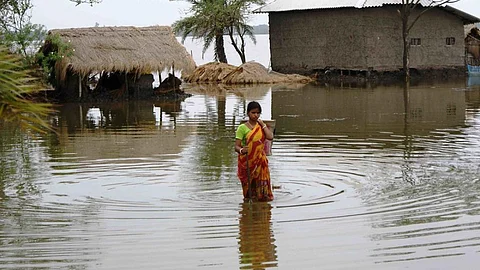
- Topics
- Feature
- Opportunities & Events
- Data
- Hindi Portal
- Topics
- Feature
- Opportunities & Events
- Data
- Hindi Portal

A team of experts have created India's first flood inventory freely available in modern geospatial formats with the help of data from the India Meteorological Department from 1985 to 2016. Data for the flood inventory is derived 89 percent from India Meteorological Department's Disastrous Weather Events, and the remainder from Emergency Events Database (EM-DAT) and Dartmouth Flood Observatory (DFO).
The digital inventory will facilitate future data collection, scientific research on floods, disaster risk reduction, loss and damage estimations, as well as the development of financial products to reduce disaster risks. The inventory could also be useful to stakeholders building financial products and mechanisms, such as crop insurances and disaster risk insurances (Mongabay India).
Indore has been ranked as India’s cleanest city for the fifth consecutive year, in the category of cities with over 10 lakh population by Swachh Survekshan 2021. Indore is followed by Surat and Vijayawada. New Delhi was the top among smaller cities with populations between 1-10 lakh, followed by Ambikapur in Chhattisgarh and Tirupati in Andhra Pradesh.
Chhattisgarh has been ranked as the top state among the states with more than 100 local local bodies in the third consecutive year, followed by Maharashtra and Madhya Pradesh while Bihar, Tamil Nadu and Rajasthan have been ranked last.
Among the states with less than 100 local governments, Jharkhand, Haryana, and Goa ranked first. (The Indian Express)
To help protect the coastal region and the communities dependent on it, women in Sundarbans, the world's largest mangrove forest, are planting 10,000 mangrove saplings. A local non-profit and the West Bengal government are supporting the project.
The local women have taken up the difficult task of reforesting a strip of coastal land to protect it from erosion and extreme weather conditions. According to these women, the village can only survive if the embankments are protected, which is vital for their existence.
The eastern states of India continue to be battered by cyclones in recent decades, leading to many deaths. However, the number of deaths have declined over the years due to better forecasting, faster evacuations, and more shelters. (The New Indian Express)
The Uttarakhand forest department has developed a grass conservatory spread across two acres that displays scientific, ecological, medicinal and cultural information of 90 species of grass.
The germplasm conservation center, which has been built over three years using compensatory afforestation (CAMPA) funds, aims to recognise the important role that grasslands play in ecosystems and to promote endangered species.
The grass species are divided into seven categories: aromatic, medicinal, fodder, ornamental, religiously-important, agricultural and miscellaneous. Several of the grass species in the center aid in controlling forest fires, while others have a pungent odour that help to reduce human-wildlife incidents. (The Times of India)
Chennai experienced a record rainfall of 21 cm between November 6 and 7, flooding most of the city's roads and by lanes. As of today, Chennai has only 2,071 km of stormwater drain network and the crucial factor that links the drain network is largely either absent or broken. Despite receiving funds to the tune of more than Rs 5,000 crores spanning across the past few years, projects to build drains and links have not been completed.
Chennai has a flat terrain dotted with wetlands which can greatly help the draining of excess water. However, according to a study, only 15 percent of the city's wetlands are left and have been occupied as residential, commercial, and industrial projects.(Hindustan Times)
This is a roundup of important news published from November 6 - 23, 2021. Also read policy matters this fortnight.